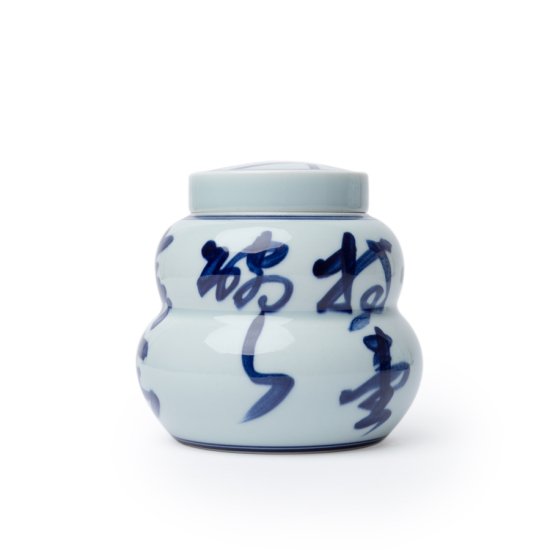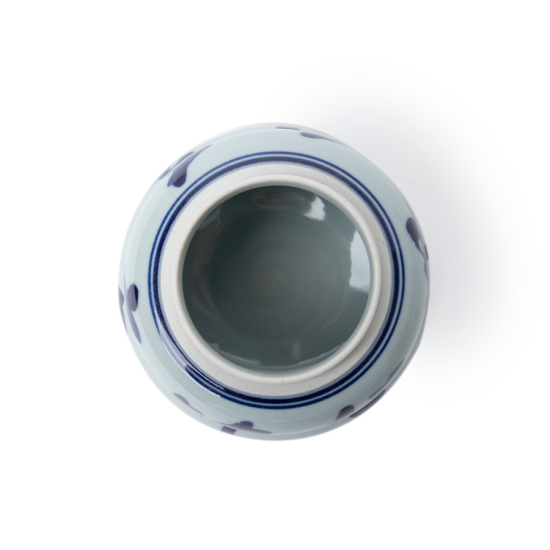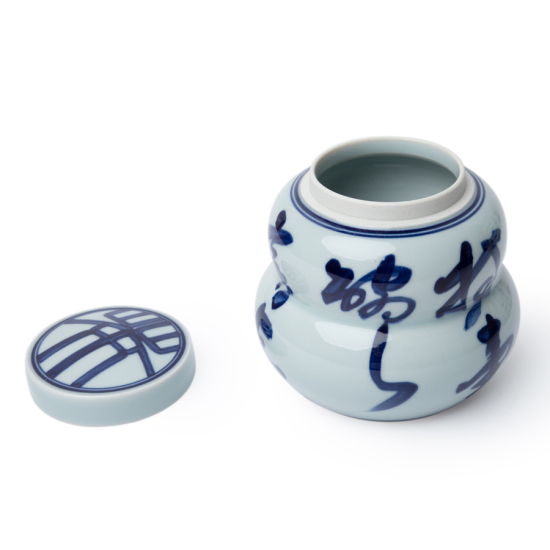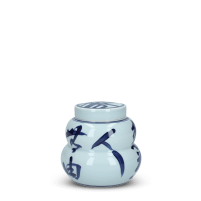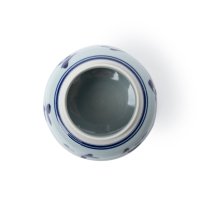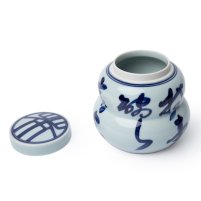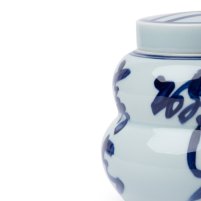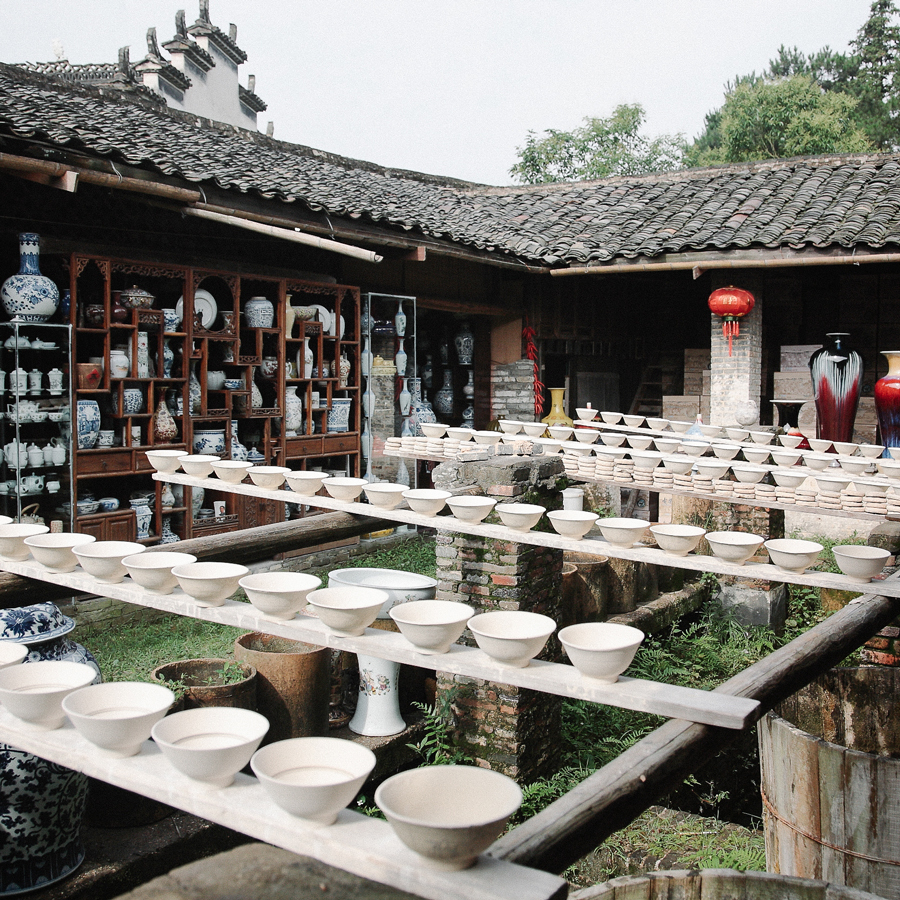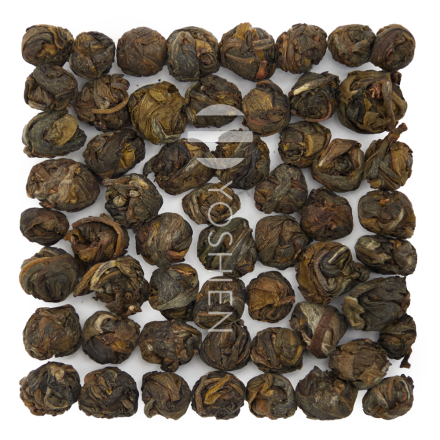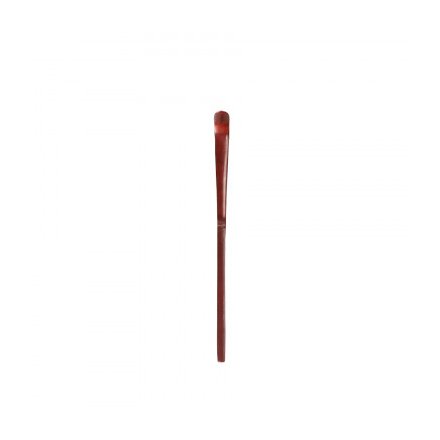Porcelain is very easy to care for and can simply be hand washed with warm water and liquid detergent. Since glazed porcelain does not absorb odours or flavours, these tea jars can be used to store different teas each time.
Blue White Tea Jar S
Jingdezhen
SKU
6030
Keep your favourite Chinese teas fresh in this classic blue and white porcelain jar made using traditional methods in Jingdezhen, the "porcelain capital" of China. This elegant jar is adorned with Chinese poetry, handpainted in a calligraphic script, and is perfect for storing black, oolong and aged white teas.
| Product | Tea jar |
| Origin | Jingdezhen, Jiangxi, China |
| Dimensions | Ø5.3cm x 11.5cm |
| Volume | For 150g tea |
| Weight | 540g |
| Material | Porcelain |
| Decoration | 無由持一碗,寄與愛茶人。
Offer a bowl of tea, |
In stock



